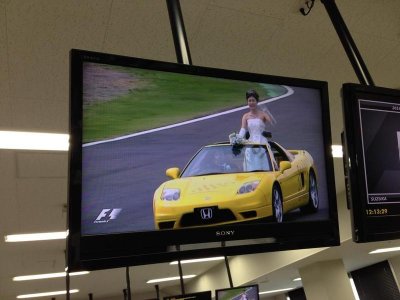Before the reform frenzy starts
OCTOBER 7, 2014 / GARY HARTSTEIN
We’re just over 48 hours since Jules’ accident. Still hoping and praying for a good outcome. And of course, by now, the dust is settling, and discourse becomes less emotional, less intense, and more reasoned. I thought I’d take advantage of this period of relative calm to put a few thoughts out there.
The first thing I want to point out is that the three most severe accidents we’ve had since 1994 have all occurred through mechanisms that are not easily predictable. I’ll not go so far as to use the expression “freak accidents”, but being hit in the head with an 800 gm spring, driving into the lifting tailgate of a lorry, or aquaplaning into the exact spot a recovery unit is working are not your standard scenarios.
I say this because we need to have a bit of perspective here. Virtually every weekend we see, often with a quiet “ho hum”, accidents that in a not distant past would no doubt have been fatal. Basically, the things that used to kill and maim drivers have almost been engineered out of the system. Fire? (Williamson, Courage, Bandini to name a few)? We just don’t see it anymore (yes we had a few, but none with any significant consequences). Frontal collisions? (Rindt) We shrug off the most spectacular. Side impacts (Senna)? Ehhhhh… Flying rollovers? Shaken, but not stirred.
Not only do we almost have to invent bizarre ways to get hurt, but when someone DOES fall victim to an unusual accident, the governing body has shown itself fairly adept at acting appropriately. Felipe’s accident? Zylon visor reinforcements. Etc etc.
Jules’ accident was INCREDIBLY violent. It is a miracle he is alive, purely and simply. And this is a testimony to the entire system. Where should we look if we want to find out if there actually IS anything to change?
To start with, I’ll harken back to one of my pet peeves.
Those of you who saw the video no doubt were impressed by just how fast that Marussia was winging it as it streaked through the runoff area into the JCB. I surely was. And I was all the more impressed that:
Jules was certainly aware of the risk at that point of aquaplaning (and was no doubt told of SUT’s off)
there were double yellow flags displayed at one, and possibly two, upstream marshal posts.
For the sake of my sanity, I’ll point out again that double yellows mean that the track might be obstructed, that there are HUMAN BEINGS WORKING trackside of the Armco, and to BE PREPARED TO STOP.
I’ve been a passenger in an F1 car, and can confirm that the brakes are phenomenal. That said, given the water on the circuit, given the loading on the car through corners 6 and 7, and given the speed of that Marussia, it is indisputable that Jules carried MUCH TOO MUCH speed into that corner. By definition. He is instructed (by the flags) to slow enough to be able to stop, yet he was fast enough to aquaplane. Those are mutually exclusive options. Period.
I’ve been saying since 2010 that flag discipline is deteriorating, and it’s deteriorating fast. And no one is making properly vigorous efforts to re-establish it.
At every F1 drivers briefing, the drivers hound Charlie for a number – “how fast can i go under yellows?” or “how fast under double yellows?”. Or even, “will I be penalised if I do 0.2 sec less than the last time thru that sector…”
THEY’RE MISSING THE POINT. AND BECAUSE WE’RE NOT INSISTING ENOUGH ON THE RIGHT ANSWER, BAD THINGS HAPPEN.
The point is that the speed that’s appropriate under double yellows is variable. It’s not a speed limit, it’s a warning. Just ahead you might have nowhere to go. Or, just ahead someone’s uncle, brother, father is pushing one of your colleague’s cars off the circuit (remember the marshal whose legs you broke in Monaco Pastor? When you kept your foot in it through double yellows into Casino? I do).
I bet that the “appropriate” speed through T6-7 Sunday was probably something like 80-100 km/h – something like pit lane speed. Had drivers done that, the absurdity would have rapidly become apparent, and race control would have had little choice but to deploy the SC.
Disrespect for flag discipline is not a minor issue. It kills and injures people. If flags are respected, things get remarkably safer. If these flags had been respected, it is hard to imagine this accident happening, at least with this kind of energy.
Before we start changing everything, wrapping JCB’s in tech pro, putting SC’s out every time someone’s in the armco, let’s correctly apply the spectacularly effective safety system already in place. And let’s start by making sure drivers actually respect the SPIRIT (“be prepared to stop”) and not the LETTER (“how many tenths down do I have to be to not get a stop-go penalty?”) of the safety regulations.
Oh and one last thing: please Jules, get better fast.





